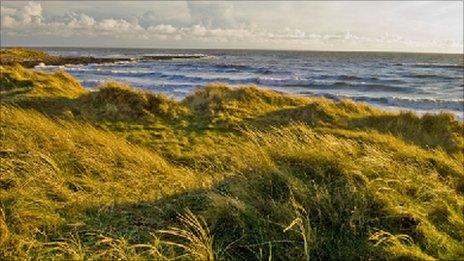Eryri: Sensors protect rare plants from mountain climbers
- Published
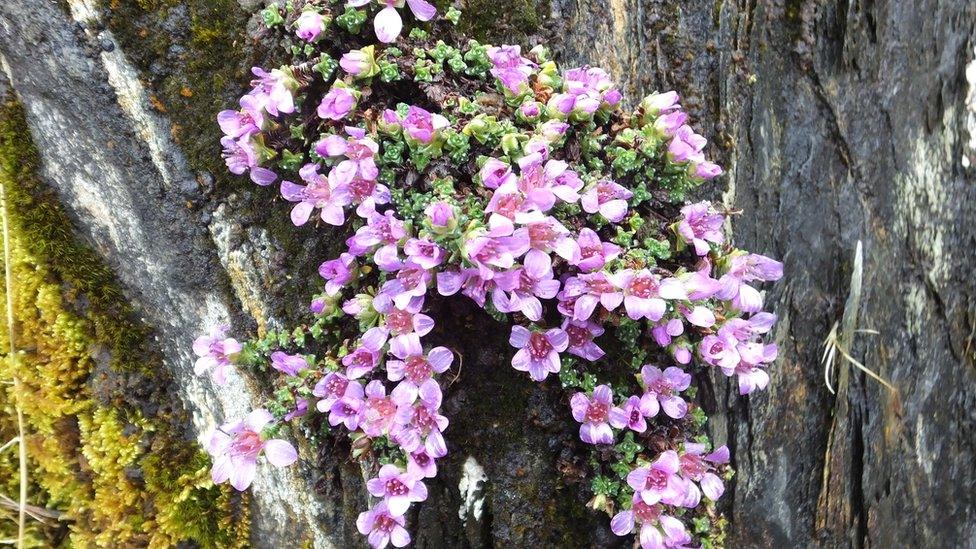
Purple saxifrage is among the rare plants that grow in rocky areas in Eryri
New temperature sensors have been installed on mountain crags to protect some of the rarest plants in Wales from accidental damage.
The Snowdon lily grows in only a small number of rocky areas in Eryri, also known as Snowdonia.
But it and other rare plants are at risk from winter mountain climbers.
Ice axes and crampons can damage the ground unless the terrain is properly frozen.
Officials hope the new sensors will tell climbers when the ground is solid enough for safe ice climbing without harming the plants, which also include purple saxifrage and Arctic Mouse-ear.
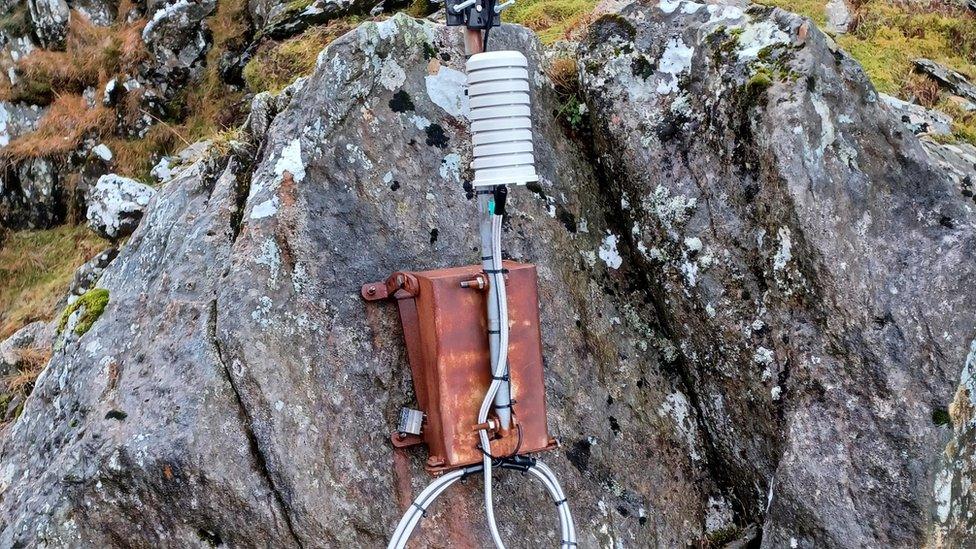
The temperature sensors will detect when the ground is solid enough for climbing without damaging the plants
The project to install them has focused on Cwm Idwal near Bethesda, Gwynedd, which is home to some of the best winter ice climbing routes, but also some of the rarest plants.
Temperature sensors have been in use there for around 10 years, but the original equipment had worn out.
Officials hope the new sensors will be more accurate and will have batteries that last longer.
Tom Carrick, access and conservation officer from the British Mountaineering Council, said: "Winter ice climbing is safest and most enjoyable when the ground is properly frozen."
He added that when the ground is properly frozen, climbers' equipment won't damage rare plant life.
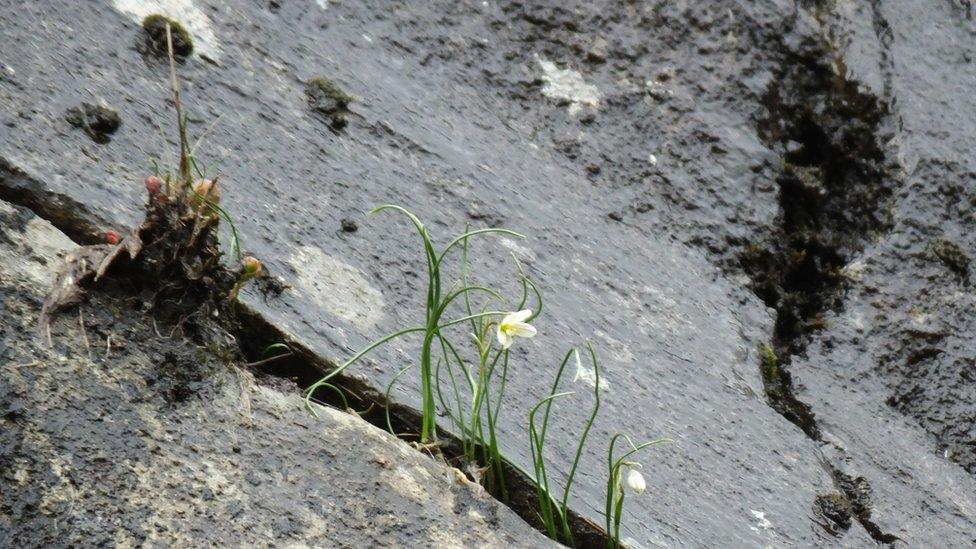
Snowdon Lily grows in rocky areas
"So the information from the sensors helps climbers to stay safe and to avoid climbing at times when ice axes and crampons can rip areas of turf and damage these rare plants," he said.
"The information from these sensors is available on a touch screen at Bwthyn Ogwen, where the path to Cwm Idwal starts, as well as online.

Tom Carrick from the British Mountaineering Council said equipment could damage rare plant life
"The important thing for us now is to spread the word about this technology to as many people as possible, so ice climbers know it's there," Mr Carrick said.
"When us climbers head out into the mountains, we look at the weather forecast, we look at the temperatures, and we look at guide books to see what routes we want to take.
"Now we want people to check these temperature probes as well - we all want to be safe, and we want to protect these rare Alpine flowers as well," he said.
The temperature sensors are at different levels - 1968ft (600m) and 2789ft (850m) altitude - and tell climbers how cold the ground is at 5cm, 15cm and 30cm below the surface.
Rhys Weldon-Roberts, partnership officer with the Cwm Idwal national nature reserve, said the rare plants in Cwm Idwal are essentially relics from the last ice age over 20,000 years ago, when the area was covered by a sheet of ice.
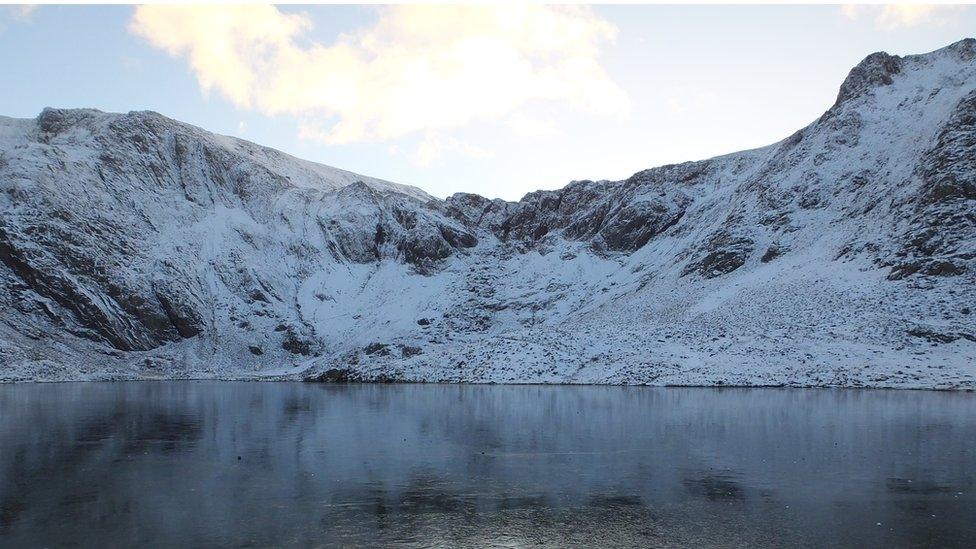
The project to install the sensors has focused on Cwm Idwal, home to some of the best winter climbing routes
"These sensors are a really good example of how conservation and leisure can work together," he said.
"It's really important for anyone to be prepared before they head out into the mountains, but just seeing snow on the ground isn't enough to be sure that conditions are right for winter ice climbing.
"Sometimes, despite the snow, the ground underneath is often not frozen - and using ice axes and crampons on unfrozen turf can severely damage the rare plant species that live there."
He said the information from the sensors would help climbers know whether the climbs are in good condition, and also help to protect these rare plants.
"It's a win-win for everyone."

WILD MOUNTAINS OF SNOWDONIA: Five farming families open their gates and share their lives
IOLO: A WILD LIFE: Iolo delves into the archives from the past 25 years

Related topics
- Published11 September 2021
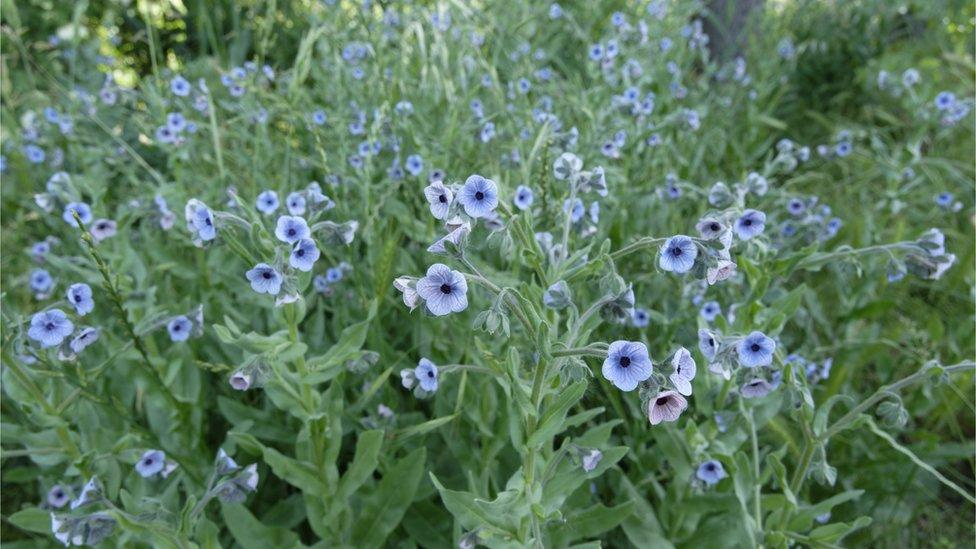
- Published28 August 2021
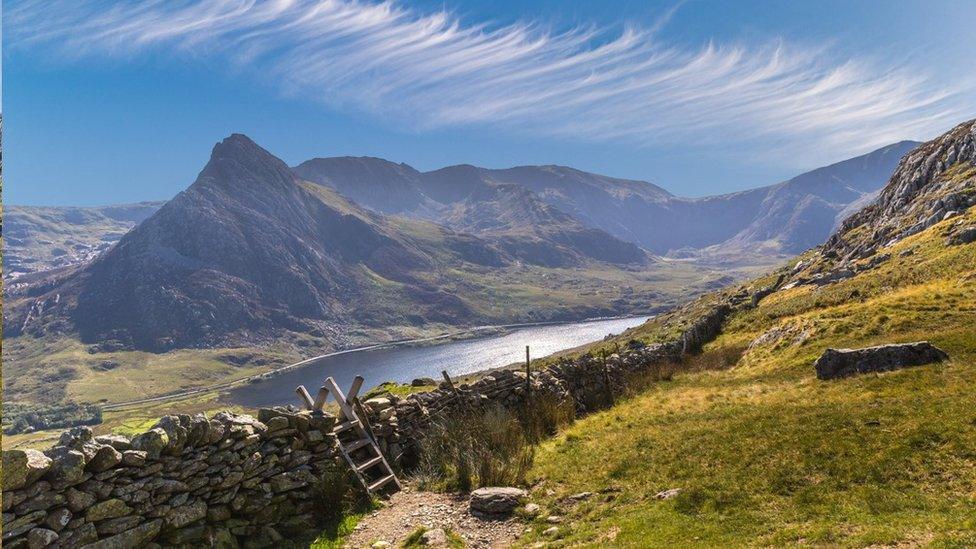
- Published6 September 2011
